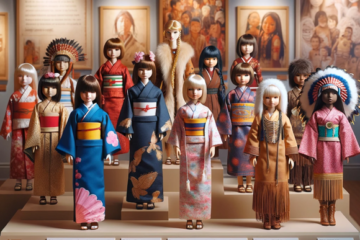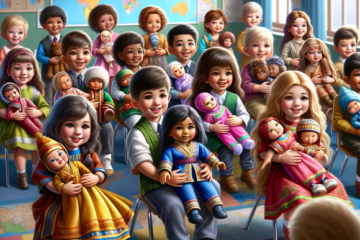In a world where societal norms often dictate what is deemed appropriate for individuals based on their gender, the role of toys, particularly dolls, cannot be overlooked. From an early age, children are exposed to toys that subtly reinforce gender stereotypes, perpetuating societal expectations and norms. Dolls, in particular, play a significant role in shaping perceptions of gender roles and behaviors. While they may seem innocent at first glance, the implications of these playthings run deep, influencing how children perceive themselves and others.
Dolls have long been associated with nurturing, caregiving, and domestic roles, characteristics traditionally assigned to females in many cultures. From Barbie to baby dolls, the majority of commercially available dolls depict females and are often adorned with stereotypically feminine features and attire. These representations not only reinforce the idea that caregiving and domesticity are inherently feminine traits but also limit the scope of what is considered acceptable behavior for boys.
For girls, playing with dolls can foster a sense of empathy, nurturing, and caretaking skills, which are undoubtedly valuable attributes. However, when these qualities are exclusively associated with femininity, it sends a subtle yet powerful message about the roles and expectations placed on girls. It suggests that their worth is tied to their ability to conform to traditional gender roles rather than their individual interests, ambitions, and talents.
Conversely, the lack of diverse representations in dolls can have detrimental effects on boys. When the majority of dolls available are female-centric, it reinforces the notion that caregiving and nurturing are exclusively feminine domains, discouraging boys from exploring these qualities and limiting their emotional development. This perpetuates the harmful stereotype that boys should be tough, stoic, and devoid of emotions—a stereotype that has far-reaching consequences on their mental health and well-being.
Moreover, the physical appearance of dolls often conforms to narrow beauty standards, further perpetuating unrealistic ideals and damaging self-esteem, particularly among young girls. Barbie, for instance, has long been criticized for promoting an unattainable body image, contributing to body dissatisfaction and low self-esteem among girls who compare themselves to this idealized figure.
Despite these challenges, dolls have the potential to be powerful tools for challenging gender stereotypes and promoting inclusivity. By diversifying representations and offering dolls that reflect a range of genders, body types, abilities, and interests, toy manufacturers can help dismantle rigid gender norms and empower children to embrace their individuality.
Parents and caregivers also play a crucial role in mitigating the influence of dolls on gender stereotypes. By encouraging open-ended play, providing a variety of toys that defy traditional gender roles, and engaging in conversations about gender equality and diversity, they can help children develop critical thinking skills and a broader perspective on gender.
In conclusion, while dolls may seem like simple playthings, their influence on shaping perceptions of gender roles and behaviors cannot be underestimated. By challenging traditional representations and promoting inclusivity, we can harness the power of dolls to create a more equitable and accepting society, where individuals are free to express themselves authentically, regardless of gender.



0 Comments